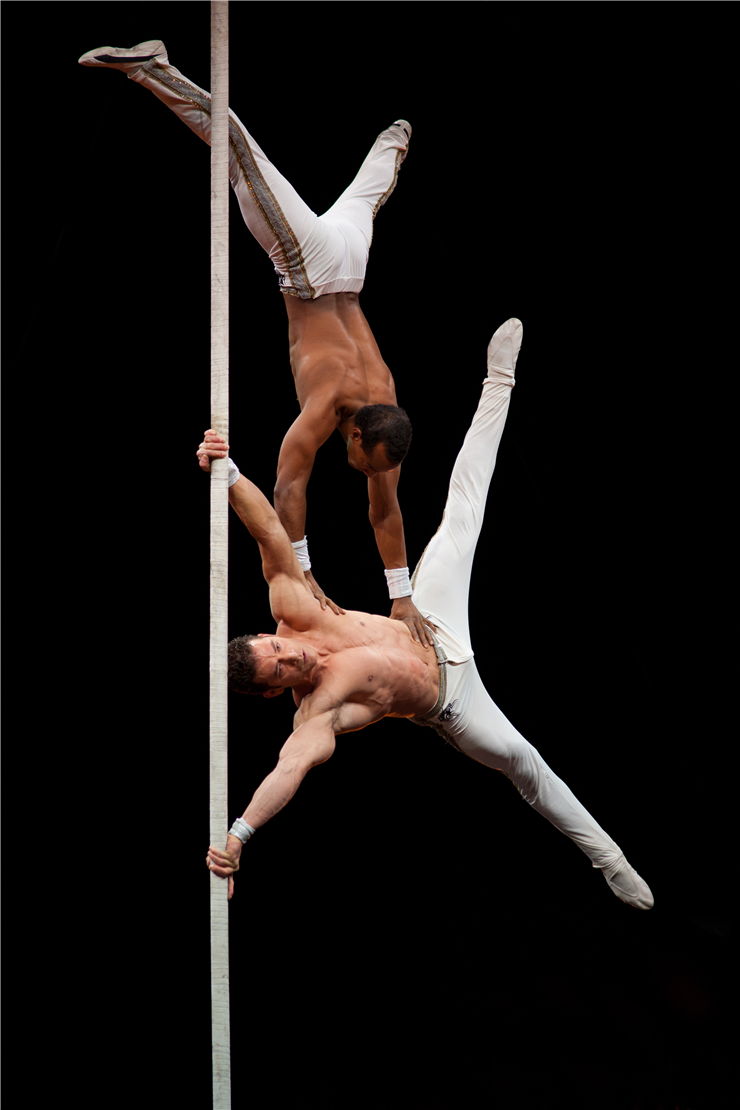History of Contemporary Circus
Contemporary circus (when it started, it was known as “nouveau cirque”) appeared in the late 1960s and early 70s. It combines aspects of classical circus with theater. It rarely uses animals and focuses on aesthetic impact, character, and story.
Although contemporary circuses originate from traditional ones, there are enough differences to consider them separate performing arts. Traditional circuses have performers primarily families that have worked at circuses for generations, while contemporary circuses have conservatory-trained performers. Contemporary circuses mostly perform in theaters and arenas, while traditional circuses perform under large tents. A traditional circus show contains a series of acts that don't have interconnection but are made to create a spectacle. In contrast, a contemporary circus tries to create unity between its actions connecting them with a central narrative or theme. Even the music is different between them. Classical circus tries to create an atmosphere of spectacle, so it uses uptempo marches and waltzes that are standards. In contrast, the contemporary circus uses a variety of music depending on the atmosphere it tries to convey, and its music is almost always especially written for the show. Traditional circus is still alive and popular, but contemporary circus tries to achieve a high standard of art and not limit themselves to only one art form.
The first contemporary circuses started appearing in France, Australia, the West Coast of the United States, and the United Kingdom. Some of the earliest are Royal Lichtenstein Circus, founded in San Jose, California, in 1970; SoapBox Circus and New Circus, which were both based in the early 1970s and 1977 merged into “Circus Oz”; the “Pickle Family Circus,” which came from San Francisco and was founded in 1975; London's “Ra-Ra Zoo” founded in 1984; “Nofit State Circus” launched the same year in Wales; famous “Cirque du Soleil” (Circus of the Sun) also founded that same year in Quebec; “Cirque Plume” from France (1984 was a good year for contemporary circus); and “Archaos,” also from France and founded in 1986.
The contemporary circus became popular, and others followed: “Cirque Éloize” was founded in Quebec in 1993; “Flam Chen” opened in Arizona, United States, in 1994; New York got its contemporary circus in the shape of “Bindlestiff Family Cirkus” in 1995; “Cirkus Cirkör” was founded in Stockholm, Sweden, in 1995; “Teatro ZinZanni” started working in Seattle in 1998; somewhere around then “West African Circus Baobab” was also founded. One of the more famous contemporary circuses, “Les 7 doigts de la main,” from Montreal, was founded in 2002. San Francisco's “Vau De Vire Society,” “Wanderlust Circus” from Portland, Oregon, and Australia's “Circa” were founded in 2004. There is also a darker variant of contemporary circus (cirque noir), which is performed by Circuses from the United States like “Lucent Dossier Experience,” “PURE Cirkus,” and the “Red Light Variety” Show from Boise, Idaho.
Combined with the traditional kind, it restored the general public's interest in circuses, which dwindled in the sixties.
